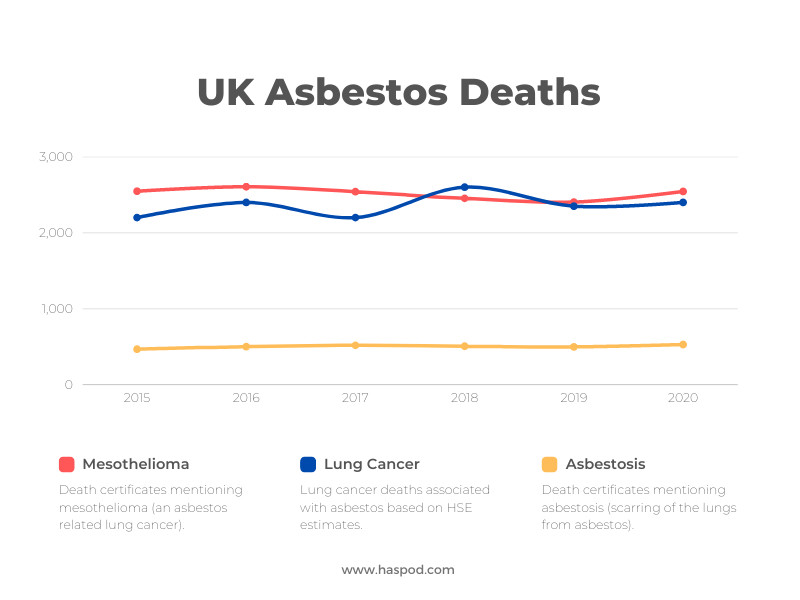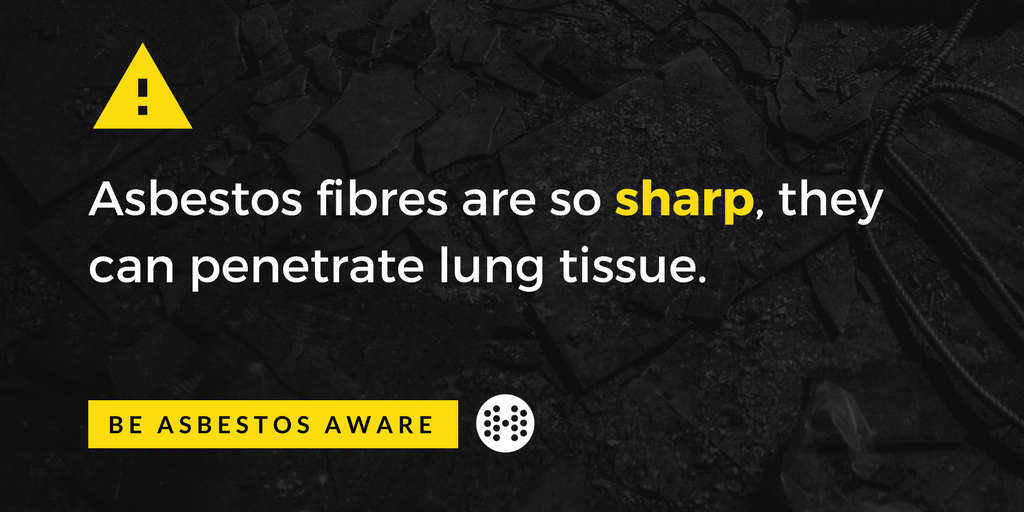12th January, 2023
40 Places You Can Find Asbestos Containing Materials
Asbestos-containing materials (often referred to as ACMs), can be found in many places. Asbestos is present in thousands of buildings in the UK, like offices, homes and hospitals. Knowing where asbestos-containing materials are can help you avoid accidental disturbance of deadly fibres.

You can find asbestos-containing materials (ACMs) in thousands of buildings in the UK. Your home. Your office. Schools. Hospitals. Factories. Warehouses. Just about any building could contain asbestos if it was built before 2000.
This isn't a reason to panic. Yes, asbestos is a dangerous and deadly material, but only when it is disturbed.
We discussed how asbestos is dangerous in another blog post. Asbestos fibres are deadly and responsible for around 5000 deaths each year in the UK.

If something is bad, generally it is something you should stay away from. So, is asbestos a material you should be looking for? Why is it important to know where asbestos-containing materials might be found?
With asbestos, it's a case of better the devil you know. If you know where asbestos is, you can deal with it. You can protect yourself.
Asbestos is not harmful in situ if it remains undamaged and undisturbed. But buildings rarely remain in one constant state. We live in them. We work in them. We make changes, renovate and refurbish them. And when asbestos is damaged, the harmful fibres can be released and breathed in, causing potentially fatal lung disease.

So knowing where asbestos materials are in your building is important, to avoid accidental disturbance and to ensure they remain in a good condition or are removed.
Asbestos was used extensively in building materials in the past. At its peak use in the 1950s - 70s, it was used in thousands of building products. Although asbestos was fully banned in 1999, any building built or refurbished before the ban is likely to contain asbestos.
If you are responsible for premises such as a shop, offices, industrial unit, flats or other premises, you have a legal duty to manage asbestos. That means locating and keeping a record of asbestos-containing materials within your building.
Where can you find asbestos? Just about anywhere! Asbestos can be used in a wide variety of places, here are 40 places you can find asbestos:
Asbestos cement found as:
- Corrugated roofing
- Cladding sheets
- Flat sheets for partitions, cladding and door facings
- Guttering and downpipes
- Flue pipes
- Water storage cisterns and tanks
Asbestos fibres are strong. Asbestos was used in cement products to add strength and reinforce thin asbestos sheets.

Roofing products including:
- Roofing shingles
- Roof tiles
- Asphalt roofing
- Roofing felt
- Bitumen
Asbestos has excellent insulation properties and produced strong long-lasting roofing products.
Insulation and sprayed coatings used for:
- Boilers and plant
- Lagging to pipework
- Loft insulation
- Fire protection to steelwork
- Thermal and acoustic insulation
- Friction materials such as brake linings and clutch plates
- Gaskets and packing in engines, heating and ventilation systems
The insulation properties of asbestos were used to keep heat in. It was also used to provide fire and sound insulation. Asbestos materials were often used as pipe lagging and loose-fill insulation.

Insulation board (AIB) used in the following places:
- Fire protection to doors
- Protected exits
- Steelwork
- Claddings on walls and ceilings
- Internal walls and partitions
- Ceiling tiles
- Window sills
Asbestos insulating board was often used internally for fire, heat and sound protection.

Composites and others such as:
- Floor tiles
- Vinyl tiles
- Adhesives
- Asbestos paper linings
- Toilet cisterns
- Toilet seats
- Bath panels
- Damp-proof sealant
- Insulating wire
Asbestos was a cheap material - and that made it very popular! It was added to a wide variety of products and advertised as strong and long-lasting.
Decorative materials like:
- Artex
- Caulking
- Filler
- Plaster
- Textured coatings
- Paints
Asbestos fibres are strong and could thicken coatings. Asbestos helped add texture and strength to products like paints, coatings, and artex.

And many more...
This list is non-exhaustive. It might seem like a lot, but these are just some of the many places you can find asbestos-containing materials.
Asbestos was used in hundreds of different building products. It was cheap, strong, and easily available - the perfect combination!
Asbestos was such a good building material that the health issues were ignored - or tolerated - for many decades, as thousands of workers became sick and died.
While we don't use asbestos in construction anymore, it hasn't gone away. It remains inside buildings, installed during previous projects.
How can you know when it's asbestos?
You can't tell if a material contains asbestos just from looking at it. You need the right type of asbestos survey to know for sure.

Once you know where asbestos is present, it needs to be managed. Your asbestos management plan should detail where asbestos is, the quantity, condition and action plan for future protection or removal.
Always check the asbestos survey before carrying out any construction or maintenance work. Disturbing asbestos must be done under strict controls to prevent exposure. Asbestos-containing materials should only be removed or disturbed by trained contractors (who often need to be licensed).
Do you know your ACMs from your AIB? Do you know your Chrysotile from your Amosite? Put your asbestos knowledge to the test with 10 asbestos awareness questions and answers explained.
This article was written by Emma at HASpod. Emma has over 10 years experience in health and safety and BSc (Hons) Construction Management. She is NEBOSH qualified and Tech IOSH.
Are You Asbestos Aware?
Take our asbestos awareness elearning course and get your certificate today.
Asbestos Awareness CourseRecent posts like this...

10 Asbestos Awareness Questions And Answers Explained
If you have had, or are about to refresh, your asbestos awareness training, you should be able to answer these 10 asbestos awareness questions. Don't worry if you are not sure about the answers - we explain them in this post to help prepare you for your asbestos awareness training.
Read Post
The Risk Of Asbestos In Artex Ceilings
Many buildings contain artex and other textured coatings on walls and ceilings that may contain asbestos. The biggest risk is not the artex itself, but the potentially deadly fibres contained in it. In this post, we look at when you should be worried, and what the law says about asbestos in artex.
Read Post
The Two Types Of Asbestos Survey (And When You Need Them)
There are two types of asbestos survey, the management asbestos survey, and the refurbishment and demolition asbestos survey. A building may require one type, or both, depending on the use of the building and the work planned.
Read Post